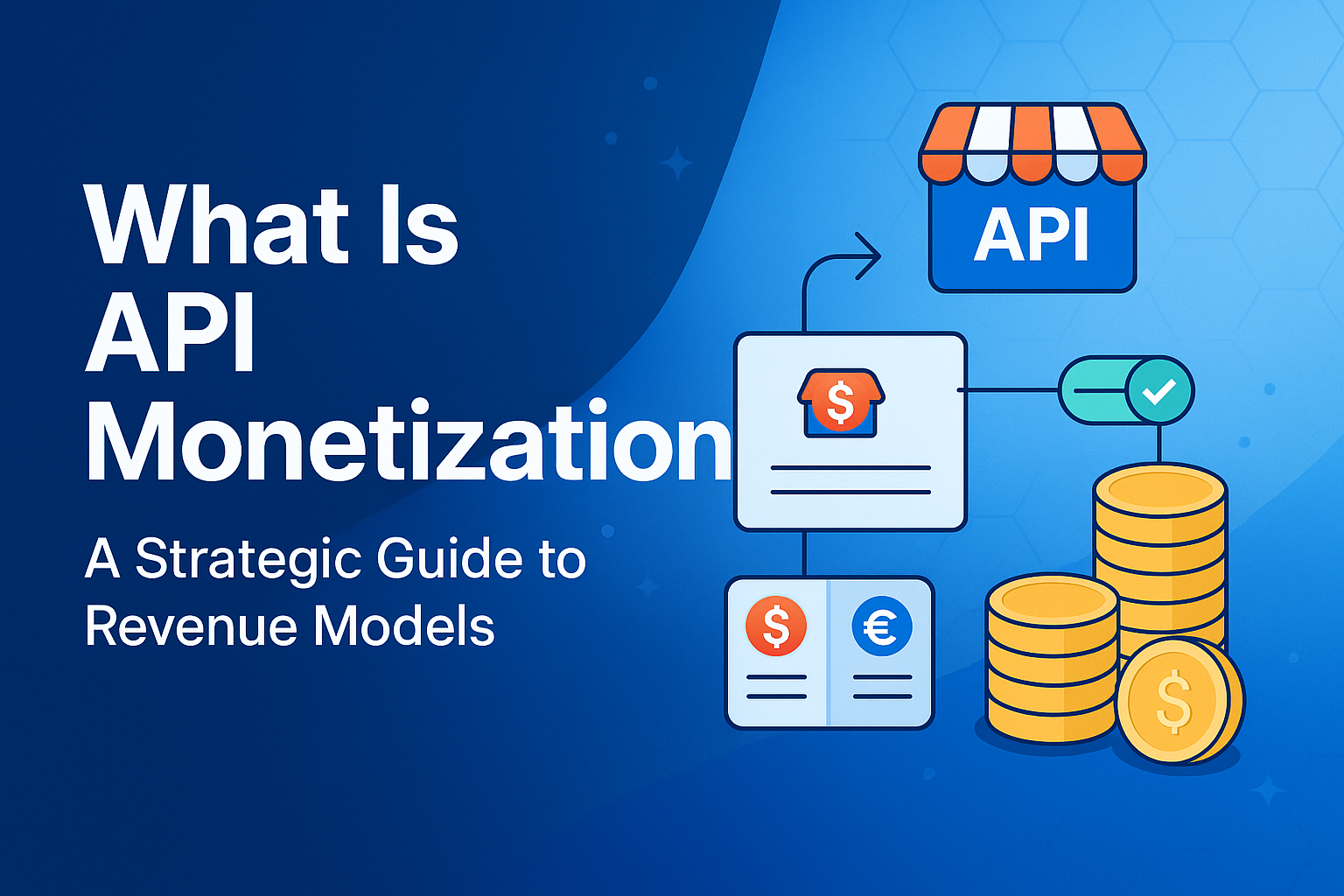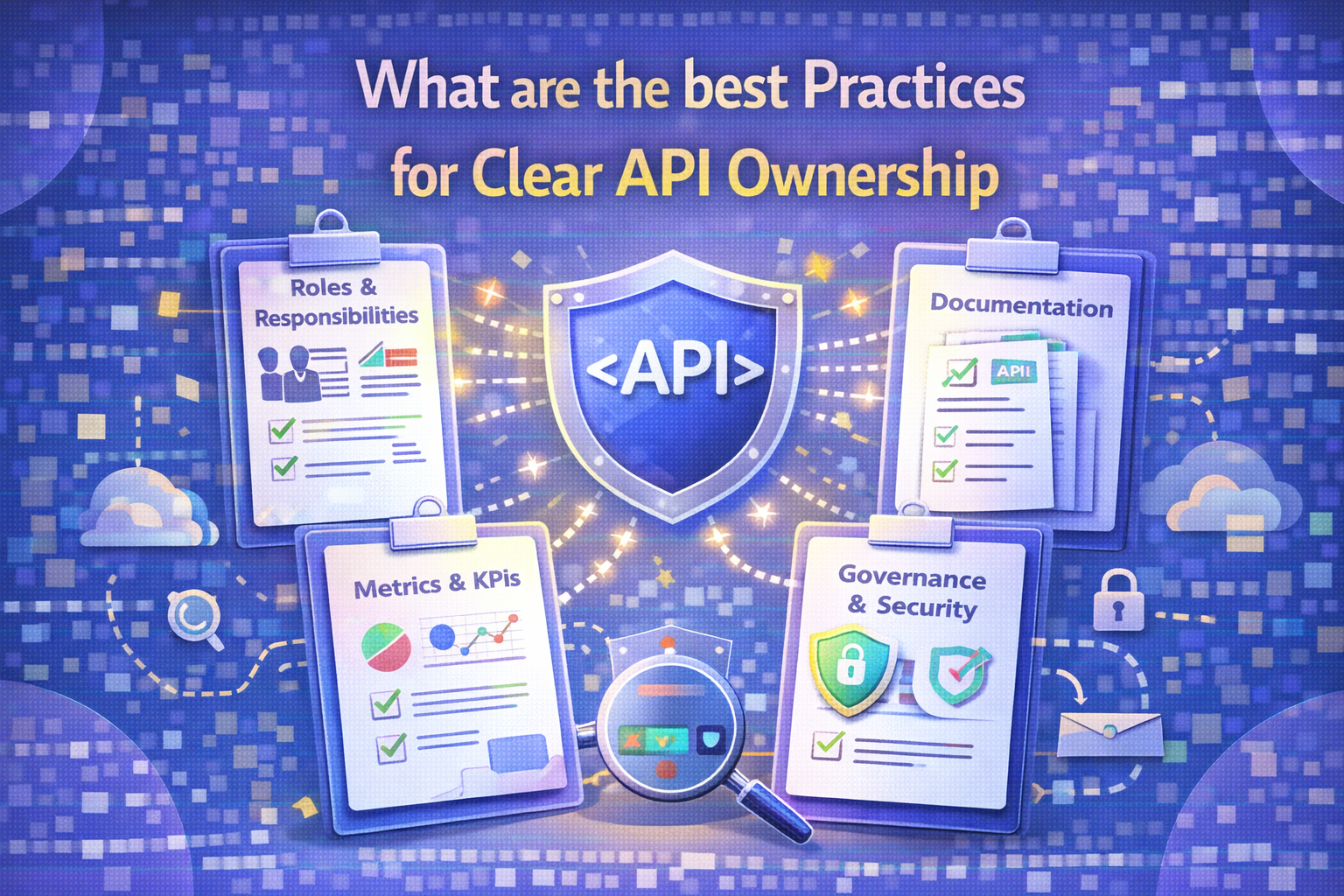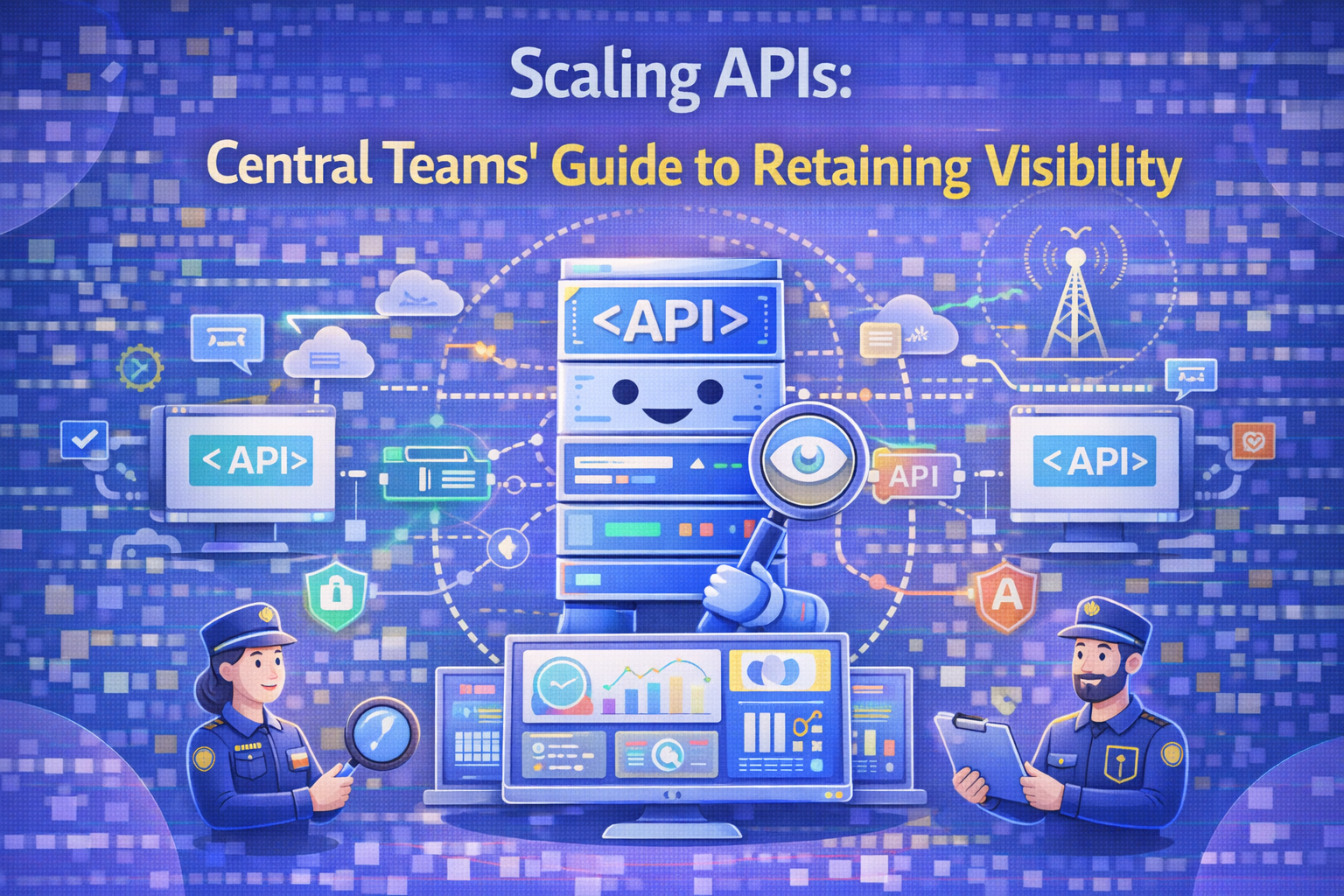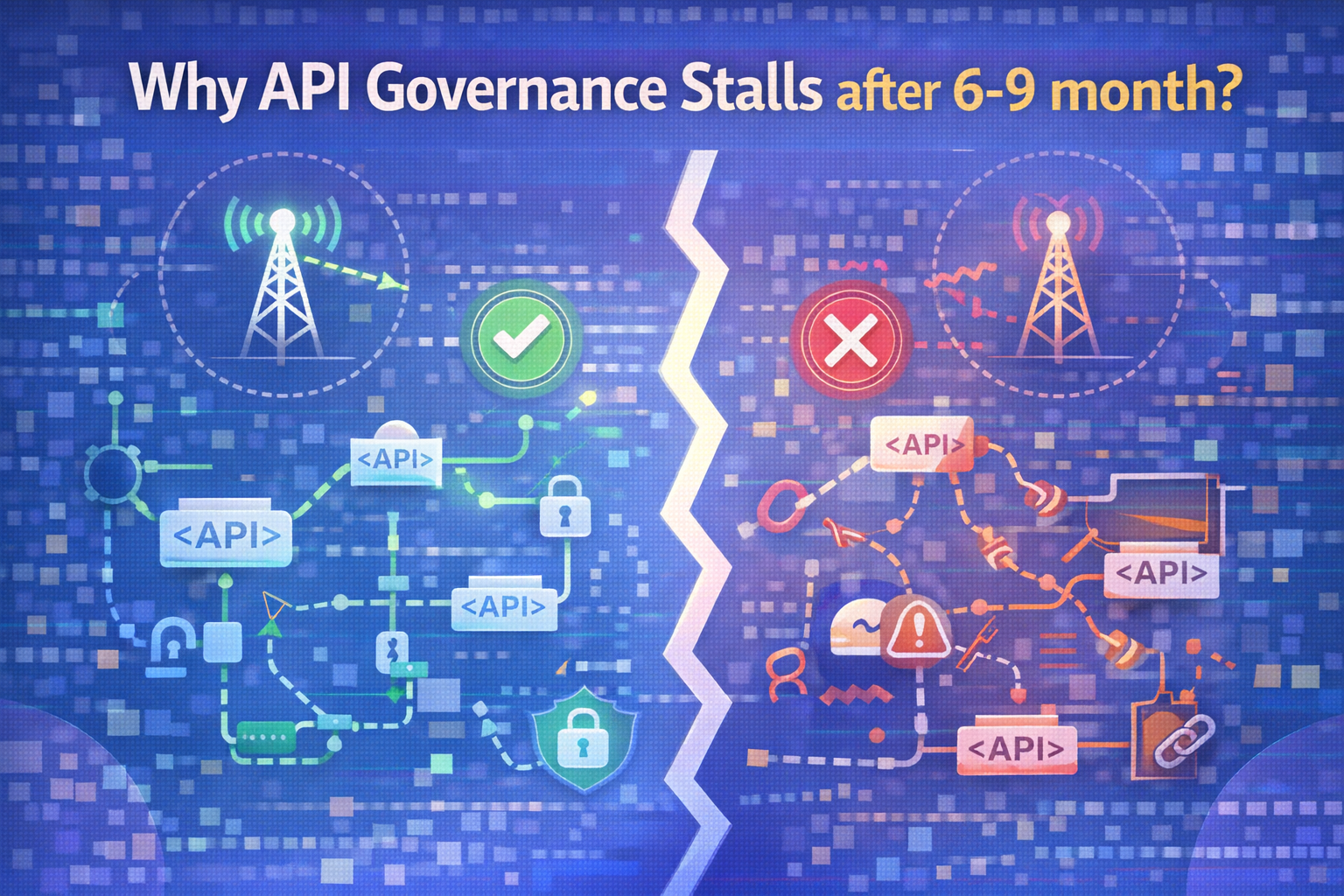API Monetization
What Is API Monetization? A Strategic Guide to Revenue Models
Updated on:

Many companies maintain APIs that quietly drain budgets without delivering measurable value. They consume engineering time, infrastructure resources, and support hours, yet generate no direct return. When APIs remain only internal tools, they shift from potential assets to ongoing cost centers that limit growth.
API monetization flips that dynamic! It is the process of generating revenue from APIs by turning internal infrastructure or data assets into market-facing products. This involves setting clear prices, access levels, and usage limits along with proper onboarding documents and support.
This guide shows what API monetization is, which models work, and how to apply them effectively.
What Is API monetization?
API monetization refers to earning money from APIs, either directly through access fees and subscriptions or indirectly by increasing the value of existing products and services.It treats the API as a marketable product, applying pricing, usage policies, and value-based models to drive business growth.
How API monetization creates business value?
API monetization creates business value by transforming APIs from technical assets into revenue-generating products. They connect systems, power applications, and deliver data where it’s needed. Without a monetization strategy, APIs only consume resources without directly contributing to growth.
By adopting a defined API revenue model, businesses can generate steady income through defined pricing models, expand customer access by attracting new partners and developers, and improve returns on technology investments by turning infrastructure costs into profit centers.
The rise of the API economy
Over the past decade, APIs have transformed from hidden technical components to valuable business resources. They make data sharing and system connections possible, which helps companies build value and provide services across different industries.
Business leaders at APIcon explain how API monetization grows their market presence and builds stronger partner relationships. When companies set up the right revenue models, APIs stop draining budgets and start bringing in real money. Executives see this change as a chance to turn their APIs into actual products they can sell.
Why companies monetize APIs
API monetization allows companies to turn existing technology into a measurable source of income. By charging for access, they capture more value from the capabilities they have already built and maintained over time. Here are the main benefits driving API monetization today:
1. New revenue streams
When you start charging for API access, the technology you already run begins to earn its keep. You can set subscription plans, usage tiers, or per-call fees that match how people use it. Over time, those payments cover costs and add profit without building anything new.
2. Wider market reach
With a paid API, you can invite developers and partners to build on your platform. Their applications often reach customers you might never approach on your own. In turn, those new connections give you more visibility and potential sales in untapped markets.
3. Better use of existing investments
You’ve already put money, time, and skilled people into building your API. If it only supports internal systems, you’re leaving value on the table. Charging for access means those same resources start bringing in revenue while still serving your own needs.
4. Stronger partner relationships
When partners pay for access, they handle your API like an important part of their own business. It usually creates better integration work, more regular communication, and longer agreements. Clear terms build the base for a partnership that helps both companies.
5. Flexibility to shape growth
When you monetize your API, you decide who can use it and what they can do with it. You start by letting a few important customers try it, see how they work with it, then let more people use it when you want to grow.
Get a Unified View of your API estate with DigitalAPI. Book a 1:1 demo
Common API monetization models
The right API monetization strategy decides how your API generates revenue and who it attracts. Choosing well means matching the way you charge with the way your customers actually use the service.
Here are the most common API monetization models used by companies:
- Pay-as-you-go or pay-per-use: Customers pay for every request, which helps teams with changing demands to avoid long-term costs. This is common for public APIs with low entry thresholds.
- Subscription-based: Clients pay monthly or annually for reliable API access. It comes with tiered plans, ranging from lower tier for startups to enterprise plans for high-volume users.
- Freemium: A freemium API monetization model gives users free access to basic features. Users can upgrade the access if they find the usage, support, or tools helpful.
- Quota-based: Customers purchase a fixed number of API calls or data units. When limits run out, they often switch to a larger plan or top up accordingly.
- Transaction fee: The provider charges a fee for every successful API request. This model fits payments, bookings, or services with per-use value.
- Revenue sharing: The platform earns a share of revenue generated by partners using its API. It suits third-party marketplaces where others sell services.
Enterprise licensing: Large customers pay upfront for broad API access, often with added support and service terms.
Indirect API monetization
Indirect API monetization means your API helps generate revenue without charging for access. It supports other products or services in ways that increase sales, improve retention, or create new opportunities for your business.
Here are some common indirect API monetization methods:
- API as a feature: Companies use APIs to extend core product capabilities. Extra functionality helps attract and retain customers who need the added integration.
- API as a sales funnel or distribution channel: Businesses place services into third-party platforms using APIs. It expands reach and helps generate sales without extra advertising costs.
- API feeding a data-driven product: Teams submit structured data using APIs. That data supports downstream transactions or monetized insights tied to product activity.
- API creating internal or omni-channel experiences: Firms connect customer touchpoints across apps, sites, or stores. Consistency improves retention and reduces drop-off from disconnected systems.
- Better work speed: APIs automate manual operations like tracking and updates. Faster processes improve delivery speed and lower cost per transaction.
APIs for data collection and utilization: Companies gather usage data from API activity. Real-time signals support product planning, pricing strategy, and high-value customer segmentation.
Turn APIs into products with Digital API. Book 1:1 Demo
Choosing the right API monetization platform
Not all API monetization platforms are created equal. The right choice depends on your business model, the type of APIs you provide, and how you expect customers to consume them. A strong platform should do more than just charge for API calls — it must combine usage tracking, flexible billing, developer experience, and governance into a single, seamless workflow. When evaluating platforms, consider whether they support the following capabilities:
- Flexible pricing models: Support for subscription, pay-as-you-go, tiered, freemium, or hybrid models so you can adjust as your business evolves.
- Accurate usage tracking: Real-time metering of API calls, data transfer, latency, and error rates. Without precise usage tracking, billing and customer trust break down.
- Integrated billing & payments: Automated billing workflows with integrations into popular payment gateways, enabling recurring payments, invoicing, and overage charges.
- Developer portal & self-service: An intuitive portal where developers can discover APIs, sign up, subscribe, and monitor their own usage. This reduces friction and improves adoption.
- Analytics & reporting: Dashboards to track consumption trends, revenue per API, customer behaviour, and SLA compliance. Analytics not only power billing but also help shape product strategy.
- Governance & security: Role-based access control, quotas, rate limiting, versioning, and compliance features to ensure APIs are monetized securely at scale.
- Scalability & integration: The ability to plug into multiple API gateways, scale across departments, and integrate with CRMs, ERP, or cloud systems without heavy customisation.
Comparing API monetization platforms by type
Here’s how different categories of platforms stack up:
Pro tip: If you operate in an enterprise environment with multiple API gateways, look for a platform that can provide centralised visibility, unified usage tracking, and governance across all APIs. This avoids fragmented analytics and inconsistent billing.
Strategic steps to monetize your API
Turning an API into a revenue source takes more than picking a pricing model. You need a plan that covers the technology, the market, and the business rules so the monetization effort pays off. Here are the key steps to help you move from idea to income:
1. Define the value your API delivers
Before you start charging, you need to know exactly why someone would use your API. Talk to early users, review support requests, and look at usage data from a tracking platform to see which features matter most. When you understand the real problems your API solves, setting the right model and price becomes much simpler.
2. Identify your target users
You can’t design a monetization plan for “everyone.” Start by looking at who’s getting the most out of your API right now and why. In many cases, APIs intended for partners end up being most valuable to internal teams, and the pricing strategy needs to shift to fit that reality.
3. Choose the right monetization model
Pick a model that fits how your users work, not just what’s common in the market. If usage jumps around, charging per call keeps things fair. When activity is steady, a subscription can make costs predictable for them and revenue reliable for you.
4. Build the infrastructure to support monetization
Once you start charging, users expect smooth onboarding, accurate billing, and clear usage data. Set up systems that track calls, enforce limits, and handle payments without friction. The right infrastructure keeps trust high and support requests low.
5. Use an API monetization tool
A monetization tool can help with more than billing. It can show which users bring the most value, track how your pricing models perform, and highlight popular features. By automating these tasks, it supports every step you’ve taken so far and makes scaling much simpler.
Legal, security & compliance considerations
When you monetize an API, your responsibilities change. You handle customer data, create usage rules, and promise certain uptime and performance levels. If you fail in these areas, the damage to trust and revenue becomes difficult to repair.
Before you launch, focus on these areas to avoid costly mistakes:
Licensing: A clear license explains how people can and cannot use your API. It protects your business when someone tries to misuse it and gives real users confidence they follow the right rules. Good licensing creates clear expectations from the beginning and stops unnecessary disputes later.
SLAs: An SLA is your promise about how the API will perform. It can cover uptime, response speed, and how quickly you’ll handle issues. Setting this out early helps customers know what to expect and gives you a clear standard to meet.
GDPR, CCPA, SOC 2: When your API handles personal or sensitive data, privacy and security laws come into the picture. GDPR, CCPA, and SOC 2 set the rules for how you need to store, share, and protect that information. You have to follow these standards - they keep you legally safe and show customers they can trust you.
Rate limiting and abuse protection: Too many requests from one user can drag down your API for everyone else. Rate limits keep usage fair and predictable. Abuse checks catch unusual patterns before they turn into bigger problems.
How to monetize APIs: Industry-specific guide
Each industry uses APIs differently, and monetization depends on the value they deliver. Here’s how strategies work across key sectors:
Guide to monetizing banking APIs
Banking APIs connect financial systems, enabling payments, lending, and account aggregation while creating opportunities to generate revenue.
- Charge per transaction or API call.
- Offer tiered access for partners and fintech integrations.
- Provide premium analytics or reporting features.
- Ensure compliance with PSD2, RBI, or local banking regulations.
Guide to monetizing healthcare APIs
Healthcare APIs enable secure data sharing between EHRs, patient apps, and insurance systems, opening ways to monetize access.
- Use tiered or usage-based pricing for endpoints.
- Offer premium analytics or integration support.
- Prioritize HIPAA and other data privacy compliance.
- Enable third-party apps to connect to your platform for added value.
Healthcare API pricing model
Healthcare APIs often use a hybrid pricing approach that balances adoption and revenue. The goal is to encourage integrations while monetizing high-value features.
- Free basic access: Offer limited endpoints or lower data volumes at no cost to drive adoption and let developers test your API.
- Paid tiers: Charge for premium endpoints, higher data volumes, advanced analytics, or priority support. This ensures that heavy users or enterprise clients contribute proportionally.
- Usage-based pricing: Consider charging per API call, per patient record, or per transaction, so costs scale with usage and value delivered.
- Value-based add-ons: Include features like reporting dashboards, AI-powered insights, or integration tools as part of premium plans to increase perceived value.
Guide to monetizing insurance APIs
Insurance APIs streamline policy management, quotes, and claims, helping insurers convert data and processes into revenue.
- Charge per claim, quote, or transaction processed via API.
- Revenue shared with partners, brokers, or marketplaces.
- Offer premium services like advanced risk analytics or custom integrations.
- Focus on APIs that improve onboarding and customer experience.
API monetization for SaaS
SaaS APIs extend product functionality and open new revenue streams by offering value-added access to external users.
- Tiered subscription or usage-based pricing.
- Freemium access to attract developers and upsell premium features.
- Monetize integrations and automation that save time or add value.
- Offer add-ons for data enrichment, analytics, or premium support.
Real-world examples of API monetization
APIs can generate revenue directly or indirectly. Well-known companies show practical ways to turn API access into income or grow the core business.
Here are examples from both models:
Direct API monetization examples
Direct API monetization turns your API into a product people pay to use. You can charge per request, offer tiered subscriptions, or sell premium access for advanced capabilities.
Here are 2 successful examples of direct API monetization model:
1. Twilio – usage-based pricing: Twilio makes money every time its API sends a text, connects a call, or runs a video session. Customers only pay for what they use, so costs match demand while revenue grows with activity.
2. Stripe – transaction fees: Stripe takes a fee for each payment processed through its API. Every completed sale on a customer’s site sends a small percentage to Stripe. This model gives Stripe steady and predictable revenue.
Indirect API monetization examples
Indirect API monetization means using an API to increase sales, expand your customer base, or strengthen your brand without charging for the API itself. It’s about creating value that leads to revenue in other ways.
Here are examples of indirect API monetization:
1. Shopify – revenue sharing: Shopify offers APIs for building apps and integrations on its platform. When merchants use these apps to sell more, Shopify takes a percentage of the sales. It adds extra revenue on top of its subscription income.
2. HubSpot – tiered pricing access: HubSpot includes API access in its higher subscription tiers. As customers grow and need deeper integrations, they often upgrade their plan. This approach drives more revenue without charging separately for the API.
If you’d like detailed information on API monetization examples and models, read here.
API monetization pitfalls to avoid
The most common API monetization mistakes include weak security, unclear pricing, and poor planning that often cause lost revenue. When you avoid these problems, you can protect your growth and keep your customers confident in your service. Here are common problems to watch for:
Weak security measures: If your API security is thin, you invite risks that can cost more than lost revenue. A breach can erode the trust you worked to build. Protect your endpoints with authentication and encryption, and review controls often so you catch issues before attackers do.
Overcomplicating the pricing model: When your pricing is buried in layers of conditions, customers start to doubt whether they’ll ever see value. A clear structure builds confidence and speeds decisions. Break plans into simple tiers, set usage limits that make sense, and make costs predictable so there’s no surprise when the invoice arrives.
Monetizing prematurely: Some teams rush to charge for their API as soon as it’s functional. The problem is, an early release often means incomplete features, patchy documentation, and bugs that frustrate developers. When it happens, you lose trust fast. Give the market a polished product that solves a clear problem before asking them to pay.
Neglecting API management tools: Trying to build metering, usage tracking, and billing into your API from scratch eats time and creates risk. A dedicated management platform handles these tasks more efficiently, keeps pricing flexible, and adds a layer of built-in security you’d otherwise have to develop yourself.
Lack of observability and analytics: When you don’t know how your API is being used, you’re left guessing at every improvement. You miss patterns that could guide better pricing or highlight performance issues. Strong analytics give you a clear view, so you can act with confidence instead of assumptions.
The future of API monetization
When you monetize an API, you face important decisions about revenue generation, usage measurement, and compliance maintenance. These choices become increasingly important as regulations are growing stricter and competitive pressure is increasing in the market.
DigitalAPI brings these elements together in one solution. It manages pricing, security, access, and analytics, giving leaders the clarity to act fast and capture revenue opportunities without unnecessary risk. It keeps APIs profitable, efficient, and aligned with long-term business goals.
FAQs
1. What is API monetization and how does it work?
API monetization is about generating revenue from your API. It means deciding who gets the access and how they pay for it. You might charge based on how much someone uses the API or offer subscription plans. Tracking usage and billing is key, and many businesses use tools to handle these steps smoothly.
2. What are the best models to monetize APIs?
The best model depends on your product and users. Common approaches include:
- Pay-as-you-go: charge customers based on API usage
- Subscription: fixed recurring fees for access
- Freemium: free basic features with paid upgrades
- Revenue sharing: take a cut of sales through the API
3. Is API monetization profitable for SaaS startups?
Yes, it can be if you're actually solving real problems for people and your pricing makes sense for what they're getting. A lot of SaaS companies are finding that when they monetize their APIs the right way, it brings in reliable money, helps them grow their user base, and keeps customers sticking around.
4. What’s the difference between direct and indirect API monetization?
The key difference between direct and indirect API monetization lies in how revenue is generated. Direct monetization involves charging customers specifically for API usage through fees or subscriptions, supported by API usage tracking & billing systems that measure and manage consumption. While indirect monetization provides free API access while leveraging it strategically to drive revenue through other channels like increased customer acquisition or improved retention.
5. What tools help with API monetization?
Tools that help with API monetization handle pricing, track usage, and manage billing easily. DigitalAPI is one such tool that also keeps your API secure and provides insights to improve how you make money from your APIs.
You’ve spent years battling your API problem. Give us 60 minutes to show you the solution.
.svg)

%20(1).png)




